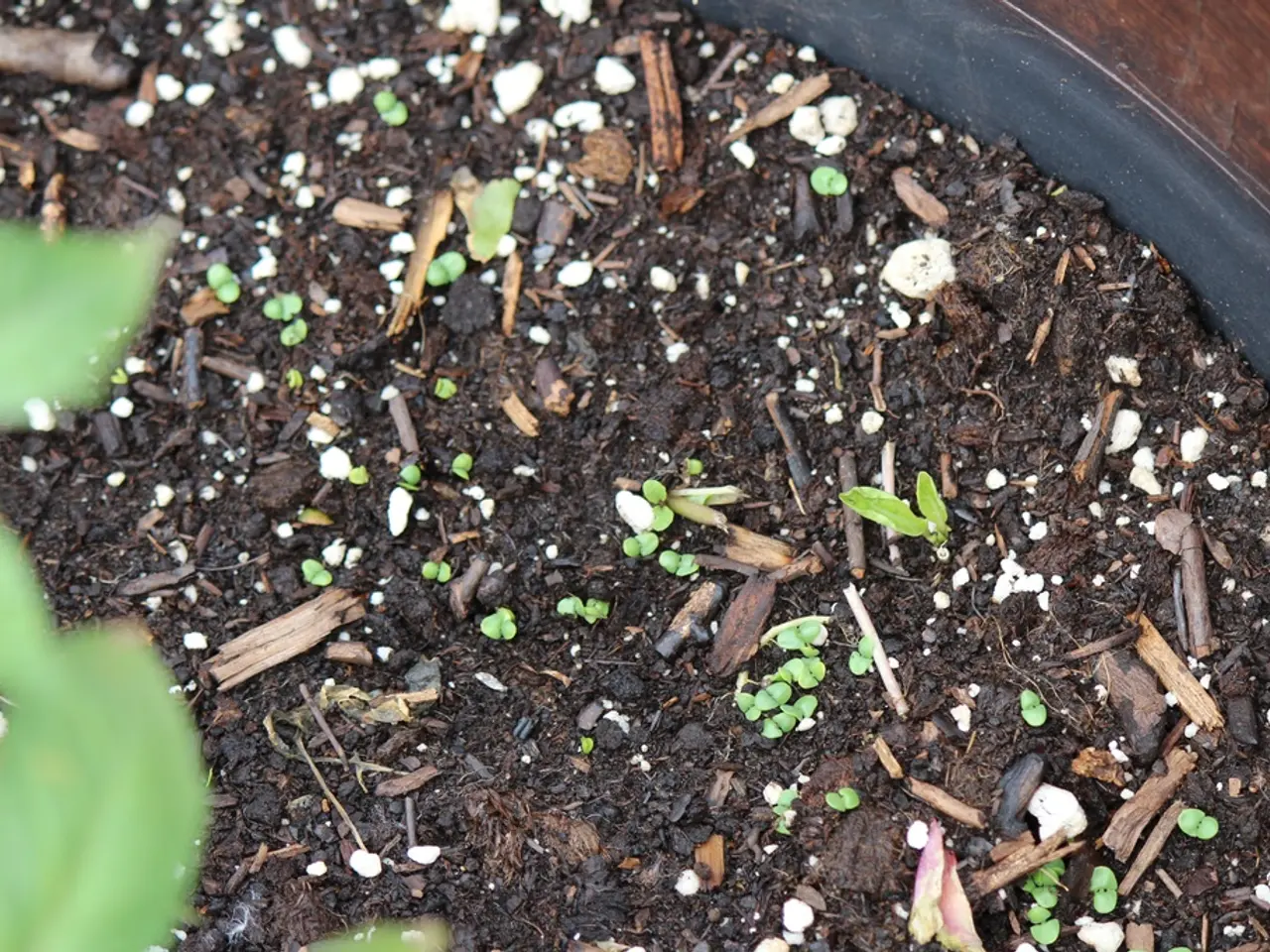Excessive Phosphorus Levels and their Effects on Plant Growth and Soil Quality
In an effort to maintain a healthy and balanced garden, reducing the levels of phosphorus (P) in soil without active chemical or mechanical methods is crucial. Here are some passive or natural approaches to consider:
Minimizing soil disturbance, through practices like no-till gardening, helps preserve soil structure and microbial networks, thereby limiting phosphorus mobilization and loss. This results in more stable P levels in soil.
Cover cropping, by growing cover crops such as legumes, grains, and brassicas, protects soil from erosion, suppresses weeds, and adds organic matter upon decomposition. This organic matter improves nutrient cycling and can help moderate phosphorus availability by encouraging biological uptake and incorporation rather than leaving excess free in the soil.
Crop rotation, especially including those that have different phosphorus uptake patterns, helps balance P levels by preventing accumulation in specific patches of soil.
Encouraging Phosphate-Solubilizing Microorganisms (PSMs) can help in natural phosphorus cycling, gradually decreasing excess non-available phosphorus in soil. These microbes convert insoluble phosphorus into plant-available forms.
Avoiding excess phosphate fertilizers is also essential, as only 15-25% of applied phosphate fertilizers are utilized by plants, with the rest accumulating in soil. This accumulation can lead to phosphorus buildup.
Maintaining proper soil pH and organic matter is important for regulating phosphorus levels. Natural amendments like biochar and organic compost can help regulate soil pH and improve microbial activity, indirectly assisting in phosphorus immobilization or controlled release.
It's important to note that high phosphorus levels can cause issues for plants, such as reduced ability to take up essential micronutrients like iron and zinc. Excess phosphorus can also lead to delayed flowering, reduced fruit quality, and symptoms like yellowing and withering of plants.
To address these issues, it is essential to prevent the buildup of phosphorus by avoiding the excessive use of inorganic fertilisers, composts, and manures that are high in phosphorus. Phosphorus-rich composts and manures, such as animal manures, composted leaves, mushroom compost, and bone meal, can also contribute to high phosphorus levels in the soil.
Soil testing is recommended to identify excessive phosphorus levels and take corrective action, such as using low-phosphorus fertilisers or growing phosphorus-absorbing crops. For example, planting nitrogen-fixing plants, such as legumes, can help moderate phosphorus levels without introducing additional phosphorus.
In summary, reducing phosphorus levels without active interventions relies largely on enhancing natural soil ecology and minimizing disturbance through techniques like no-till, cover cropping, and fostering beneficial microbes that mediate P availability organically. By adopting these practices, gardeners can maintain a healthy and balanced garden while minimizing the impact on the environment.
Fostering health-and-wellness of the garden, one can incorporate science-based methods in gardening. For instance, promoting Phosphate-Solubilizing Microorganisms (PSMs) aids natural phosphorus cycling, contributing to improved nutrition and fitness-and-exercise of plants by converting insoluble phosphorus into plant-available forms. Moreover, growing nitrogen-fixing plants, such as legumes, balances nutrition by moderating phosphorus levels without adding additional phosphorus, thus following a holistic health-and-wellness approach in gardening.







